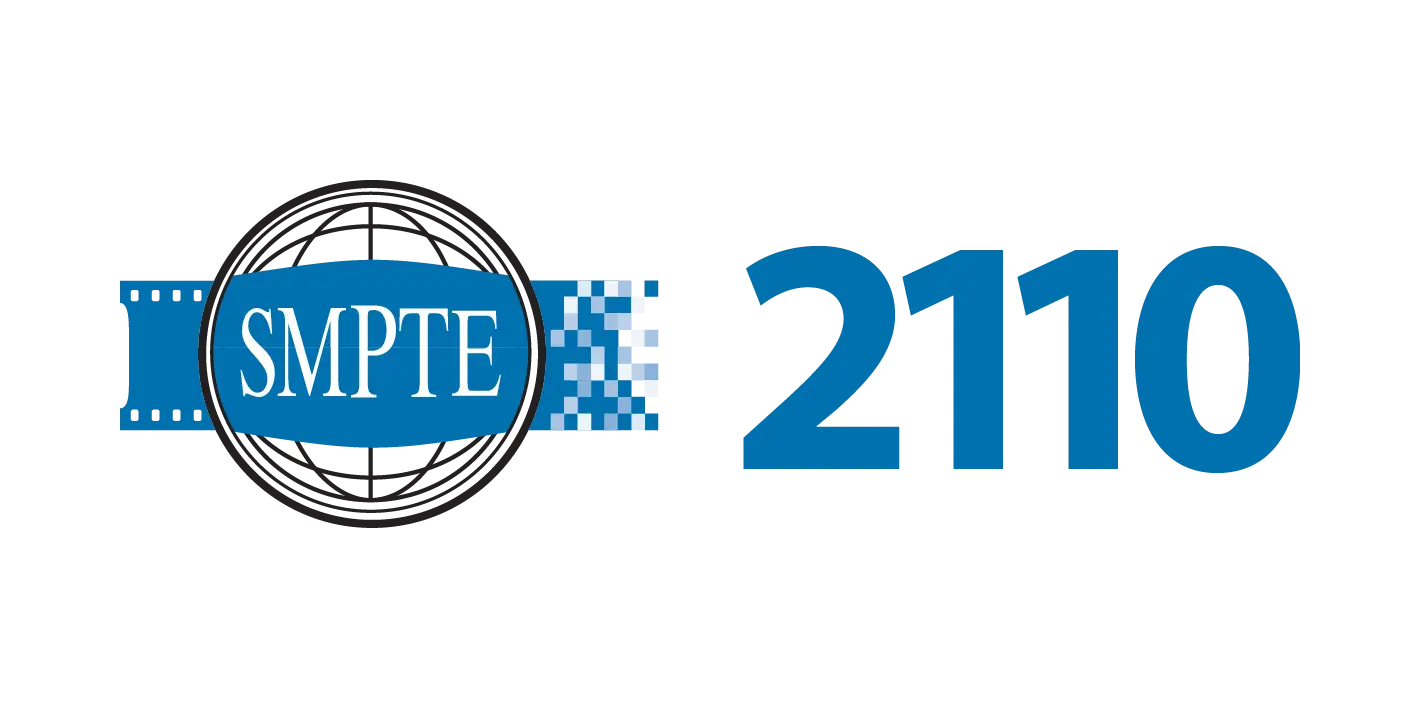Switch Configurations and Routing Mechanisms in SMPTE 2110 Networks

Switch Configurations and Routing Mechanisms in SMPTE 2110 Networks
Hello,
In this article, I’ve attempted to provide a more comprehensive explanation of the SMPTE-2110 standard that I had only touched upon superficially before. I aimed to present detailed information specifically about switch configurations and routing mechanisms. I hope this content will be useful for you.
Introduction
SMPTE 2110 is a family of standards for transporting video, audio, and auxiliary data (metadata) over IP networks in the professional media industry. While offering a more flexible and scalable structure compared to traditional SDI infrastructures, SMPTE 2110 can cause performance issues in an improperly configured IP network. Therefore, switch configurations and routing mechanisms play a critical role in SMPTE 2110 networks.
SMPTE 2110 Network Structure and Requirements
Network Architecture Diagram
The SMPTE 2110 standard enables the distribution of media content over IP networks and consists of the following main components:
SMPTE ST 2110-10: System timing and synchronization
SMPTE ST 2110-20: Video streaming (uncompressed)
SMPTE ST 2110-21: Video traffic shaping
SMPTE ST 2110-30: Audio streaming (AES67 compatibility)
SMPTE ST 2110-40: Auxiliary data (metadata)
These protocols require more bandwidth, precise timing, and prioritization than traditional IP networks. Therefore, a network infrastructure optimized for SMPTE 2110 is necessary.
Switch Configurations
Switch configuration is of great importance in SMPTE 2110-based networks. The following features should be considered for an ideal SMPTE 2110 switch configuration:
1. Multicast Support and IGMP Snooping
SMPTE 2110 optimizes broadcast streams using multicast technology. Therefore, switches need to support IGMP Snooping and IGMP Querier features. IGMP Snooping prevents unnecessary multicast traffic from spreading across the switch, saving bandwidth.
QoS Classification Diagram
Recommended configuration:
|
|
2. QoS (Quality of Service) Configuration
For stable media streams in SMPTE 2110, the network needs to be optimized with QoS. Using DiffServ (DSCP) tags to prioritize media traffic is a common practice.
Recommended QoS configuration:
|
|
3. PTP (Precision Time Protocol) Configuration
SMPTE 2110 uses IEEE 1588 Precision Time Protocol (PTP) for synchronization. Therefore, switches need to be PTP-aware and provide Boundary Clock or Transparent Clock support.
Recommended PTP configuration:
|
|
4. VLAN Configuration
In SMPTE 2110 networks, it is recommended to use separate VLANs for each type of traffic. Recommended VLAN separations are as follows:
|
|
Using separate VLANs for video and audio enables better management of network traffic and improves performance. If the network has a large-scale media infrastructure, using separate VLANs for video and audio is recommended. In smaller systems, using a single VLAN is possible, but QoS configuration needs to be carefully adjusted.
5. Interface Configuration
Interfaces in SMPTE 2110-compatible switches need to be configured appropriately for multicast and PTP traffic.
Recommended interface configuration:
|
|
Routing Mechanisms
Routing Mechanisms Diagram
In SMPTE 2110 networks, routing should be carefully planned to optimize multicast and unicast traffic.
- Multicast Routing (PIM - Protocol Independent Multicast)
SMPTE 2110 broadcast streams are optimized through routers using PIM Sparse Mode (PIM-SM) or PIM Dense Mode (PIM-DM). PIM-SM is generally preferred because it increases bandwidth efficiency.
- Dynamic Routing with SDN (Software-Defined Networking)
SDN-based switches provide more flexible routing and bandwidth management in SMPTE 2110 networks. SDN protocols like OpenFlow help dynamically optimize media streams.
- Segment Routing and MPLS
In large-scale SMPTE 2110 networks, Segment Routing and MPLS (Multiprotocol Label Switching) can be used to prioritize and optimize media streams.
Conclusion
Proper design of SMPTE 2110 network infrastructures directly affects the quality and stability of media streams. While it is critical for switch configurations to support multicast, QoS, and PTP, optimizing routing mechanisms ensures efficient transmission of media data flows. A SMPTE 2110-compatible network structure provides an important infrastructure for high-quality media broadcasts with proper planning and implementation.